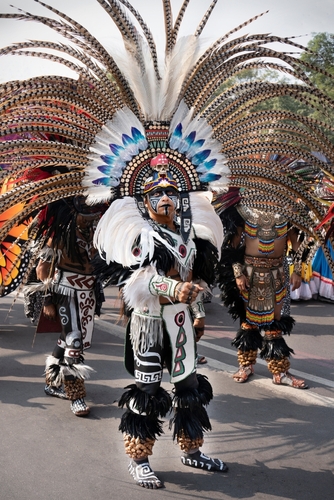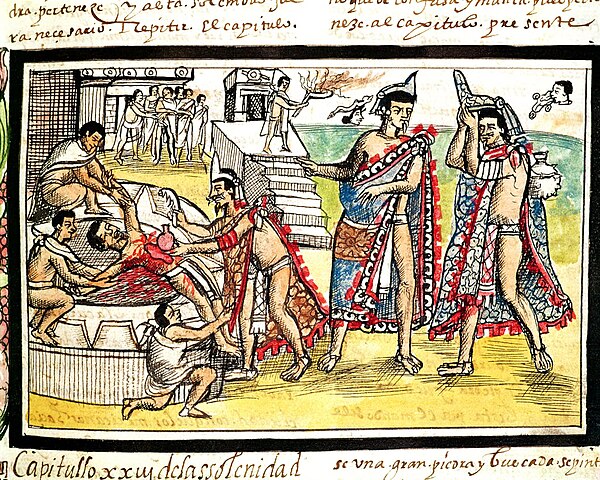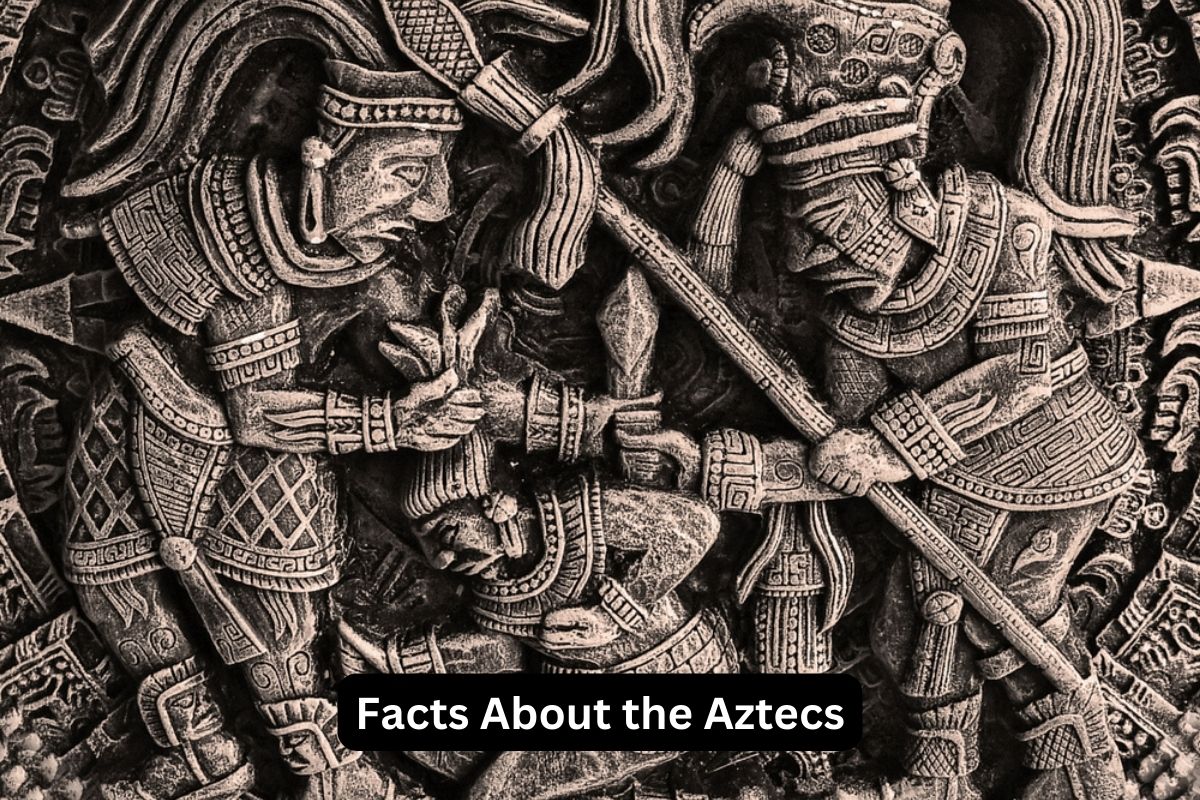The Aztecs were a remarkable and influential civilization that thrived in central Mexico from the 14th to the 16th century.
Known for their advanced agricultural practices, impressive architecture, and intricate religious beliefs, the Aztecs left behind a rich legacy that continues to captivate our imagination today.
From their magnificent capital city of Tenochtitlan to their complex writing system and unique traditions, the Aztecs have left an indelible mark on the history and culture of Mesoamerica.
In this brief overview, we will delve into the fascinating world of the Aztecs, exploring their society, religion, conquest, and enduring cultural contributions.
Aztec Empire Facts
1. Flourished in central Mexico from the 14th to the 16th century
The Aztecs, also known as the Mexica, were a Mesoamerican civilization that thrived in the highlands of central Mexico.
Their civilization rose to prominence in the 14th century and reached its peak during the 15th and early 16th centuries.
Also Read: Accomplishments of the Aztecs
The exact origin of the Aztecs is a subject of debate, but according to their own legends, they believed they originated from a place called Aztlan.
Over time, they embarked on a migration journey guided by their patron god Huitzilopochtli, which led them to the Valley of Mexico where they founded their capital city, Tenochtitlan.

2. Capital city was Tenochtitlan, built on an island in Lake Texcoco
Tenochtitlan, the capital of the Aztec Empire, was a remarkable city situated on an island in Lake Texcoco. The city was founded in 1325 and was constructed using ingenious engineering techniques.
The Aztecs created artificial islands known as chinampas, which were used for agriculture to sustain their large population. They also built causeways and canals to connect the city to the mainland.
Also Read: Inca Timeline
Tenochtitlan was an urban marvel of its time, boasting impressive architecture, temples, pyramids, palaces, and markets. Its grandeur and advanced urban planning made it one of the largest and most populous cities in the world during its height.
3. Had a hierarchical society with the emperor at the top
The Aztec society was structured in a hierarchical manner. At the top of the social pyramid was the emperor, known as the tlatoani. The position of the tlatoani was both religious and political, and he held significant power over the empire.
The emperor was considered divine and was believed to be a direct representative of the gods on Earth. Beneath the emperor were the nobles, who held important administrative and religious roles. They were followed by priests, warriors, commoners, and slaves.
The commoners made up the majority of the population and were engaged in various occupations, such as farmers, artisans, and traders.
Slaves, typically prisoners of war or individuals who couldn’t repay debts, held the lowest status and had limited rights and opportunities for advancement. The social structure of the Aztecs was rigid and strictly defined, with little room for social mobility.
4. Practiced a polytheistic religion and offered human sacrifices
The Aztecs had a complex and deeply ingrained religious belief system that played a central role in their society.
They were polytheistic, worshiping a vast pantheon of gods and goddesses, each associated with different aspects of life, nature, and cosmic forces.
Some of the essential deities in their religion included Huitzilopochtli, the god of war and the sun, Quetzalcoatl, the feathered serpent god associated with learning and knowledge, Tlaloc, the rain god, and Coatlicue, the mother goddess of earth and fertility.
One of the most controversial aspects of Aztec religion was their practice of human sacrifice. They believed that the gods needed constant nourishment in the form of human blood to sustain the universe and maintain the balance of the cosmos.
Therefore, elaborate rituals were conducted to offer human sacrifices, often prisoners of war or captives from neighboring tribes. These sacrifices took place during various religious festivals and were seen as necessary to prevent disasters and ensure the sun’s rising each day.
The Great Temple in Tenochtitlan was a focal point for these ceremonies, with dedicated platforms for sacrifices to different deities.

5. The Sun Stone, a famous artifact, was not a functional calendar
The Sun Stone, also known as the Aztec Calendar Stone, is one of the most iconic and well-known artifacts from the Aztec civilization.
Carved from basalt, this massive circular stone measures about 3.6 meters (12 feet) in diameter and weighs around 24 tons. The intricate carving on the stone is a symbolic representation of various cosmic elements and gods in Aztec mythology.
Contrary to popular belief, the Sun Stone was not a functional calendar used for tracking dates. Instead, it was a monumental representation of the Aztec view of time and the cyclical nature of the universe.
It depicted the five previous suns or epochs that the Aztecs believed had existed before the current era. The central figure of the stone represents Tonatiuh, the sun god, and the surrounding symbols refer to other gods, time cycles, and significant celestial events.
The Sun Stone held a profound religious and cosmological significance, serving as an ornate ceremonial altar rather than a practical calendar.
6. Developed agricultural system using chinampas, floating gardens
The Aztecs ingeniously developed an advanced agricultural system to support their large population, which relied heavily on chinampas or floating gardens.
In the marshy areas around Lake Texcoco, the Aztecs created artificial islands by weaving reeds into rectangular mats, which were then anchored to the lakebed. These chinampas were then covered with mud and fertile soil, creating highly productive land for cultivation.
Chinampas provided numerous benefits to the Aztecs. They allowed for year-round agricultural production, as the nutrient-rich lake water provided natural irrigation. The Aztecs grew a variety of crops on these floating gardens, including maize (corn), beans, squash, tomatoes, and chilies.
This agricultural system was highly efficient and contributed significantly to the empire’s food supply. The surplus produced by the chinampas was used for trade, further fueling the economic and political power of the Aztec civilization.
7. Used Nahuatl writing, recorded in codices
The Aztecs used a writing system based on pictorial and logographic elements, known as Nahuatl writing. The Nahuatl language was spoken by the Aztecs and other cultures in the region, and they adapted it to represent their thoughts and ideas in the form of glyphs.
These glyphs were often combined to create complex meanings, and they were recorded on various surfaces, including bark paper and deerskin.
The codices were important books that contained information about history, religion, rituals, and other aspects of Aztec life. These codices were hand-painted and intricately designed, and they played a crucial role in preserving and transmitting knowledge and traditions across generations.
Unfortunately, during the Spanish conquest of Mexico, many Aztec codices were destroyed or lost, making it challenging to fully decipher and understand their written records.
8. Conquered by the Spanish under Hernán Cortés in 1521
The downfall of the Aztec Empire came about through the arrival of Spanish conquistadors in the early 16th century. In 1519, the Spanish explorer Hernán Cortés led an expedition to Mexico with the aim of claiming new territories for Spain.
When Cortés and his small army arrived in the Valley of Mexico, they encountered the Aztec civilization led by Emperor Moctezuma II.
Taking advantage of internal divisions within the Aztec Empire and gaining support from some indigenous allies who were enemies of the Aztecs, Cortés and his forces managed to lay siege to Tenochtitlan. After a series of battles and negotiations, the city fell to the Spanish in 1521.
Moctezuma II died during the conflict, and the Aztec resistance eventually crumbled. The Spanish victory marked the end of the Aztec civilization, and the region became part of the Spanish colonial empire.
9. Skilled artists and architects, known for elaborate sculptures and pyramids
The Aztecs were accomplished artists and architects, leaving behind a rich legacy of artistic creations. They excelled in various art forms, including stone sculptures, pottery, jewelry, featherwork, and textiles.
Many of their sculptures depicted gods, mythical creatures, and prominent individuals, showcasing intricate details and symbolic meanings.
The Aztecs were particularly renowned for their awe-inspiring pyramids and temples. The Great Temple, also known as the Templo Mayor, was the central religious and political structure in Tenochtitlan. It had two shrines dedicated to the gods Huitzilopochtli and Tlaloc.
Other impressive pyramids and temples were built across the empire to honor different deities. These structures were often decorated with elaborate carvings and murals, reflecting the Aztecs’ religious beliefs and artistic prowess.
10. Enjoyed chocolate as a bitter drink made from cacao beans
The Aztecs were among the first known civilizations to discover and consume chocolate. Cacao beans were highly valued and used as a form of currency in their society.
They prepared a bitter, frothy beverage called “xocolātl” from roasted cacao beans, flavored with spices like chili, vanilla, and annatto. The drink was believed to have aphrodisiac properties and was reserved for special occasions, religious ceremonies, and the nobility.
When the Spanish encountered the Aztecs, they were introduced to this exotic beverage. The Spanish later brought cacao beans back to Europe, where chocolate quickly became popular, undergoing various adaptations to suit European tastes.
The word “chocolate” itself is derived from the Nahuatl term “xocolātl.” The ancient Aztec tradition of consuming chocolate has left an indelible mark on the world, and it remains a beloved treat enjoyed by people worldwide today.
